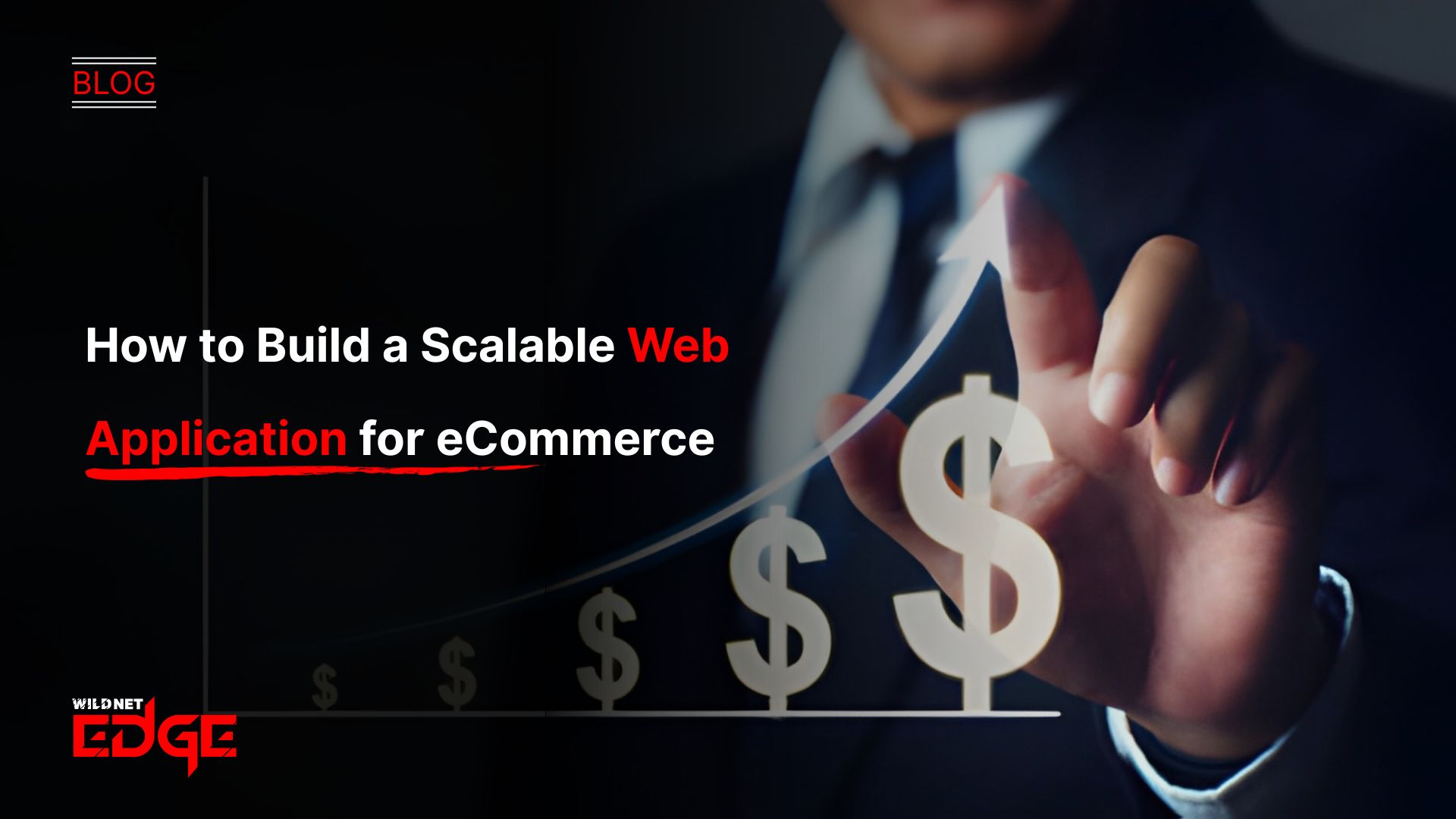TL;DR
This article provides a strategic guide on building scalable ecommerce web apps, essential for handling growth and peak traffic in online retail. It explains that eCommerce scalability allows an online store to maintain fast web app performance under increasing load. Key architectural principles are detailed, including the advantages of microservices or headless commerce over traditional monoliths, effective database scaling techniques, and leveraging cloud infrastructure like auto-scaling and CDNs. The blog emphasizes that planning for scalability from the outset prevents costly crashes during high-traffic events.
Your eCommerce business is taking off. Marketing campaigns are driving traffic, sales are increasing, but then disaster strikes: your website slows to a crawl during a flash sale or crashes completely on Black Friday. This all-too-common scenario highlights a critical truth – a successful online store needs more than just great products; it needs a robust, scalable foundation. Building scalable ecommerce web apps is not just about handling current traffic; it’s about architecting for future growth and ensuring peak web app performance when it matters most.
What Does Scalability Mean for eCommerce?
In the context of eCommerce, scalability is the ability of your web application and its underlying infrastructure to handle significant increases in traffic, transactions, and data volume without any degradation in speed, responsiveness, or availability. True eCommerce scalability ensures that whether you have 100 concurrent visitors or 100,000, every user gets the same fast and reliable shopping experience.
This typically involves horizontal scaling (adding more servers/resources) rather than just vertical scaling (making a single server more powerful), demanding a specific architectural approach.
Why eCommerce Scalability is Non-Negotiable
For an online retailer, a lack of scalability is a direct threat to the bottom line.
- Lost Revenue: Any site slowdowns or crashes at peak traffic times (for example, during sales and holidays) translate to lost sales opportunities that you can never retrieve. Conversion is affected by every second of delay.
- Poor User Experience: Today’s customers are quite impatient. Long loading times result in high bounce rates and unpurchased goods left in the shopping cart. Such a situation not only affects the brand negatively but also discourages future visits. People expect great web app performance.
- Damaged Brand Reputation: A website going down during a big event might cause negative buzz in social media and even more substantial long-term damage to your brand’s reputation for reliability.
- Inefficient Marketing Spend: It is like throwing your marketing budget down the drain when you direct visitors to a site that is unable to support the load. A good marketing strategy together with the scalability of your site will let you draw the benefits of your successful campaigns.
Building scalable ecommerce web apps is an investment in stability, customer satisfaction, and revenue protection.
Architectural Strategies for Scalable eCommerce Web Apps
Achieving eCommerce scalability requires deliberate architectural choices from the outset.
Moving Beyond the Monolith: Microservices & Headless Commerce
Traditional eCommerce platforms were often built as monoliths (one large, interconnected application). While simpler initially, monoliths become difficult to scale efficiently. Modern approaches offer better flexibility:
- Microservices: Breaking the application into smaller, independent services (e.g., product catalog, cart, checkout, inventory). Each service can be scaled independently based on its specific load.
- Headless Commerce: Decoupling the front-end presentation layer (the “head”) from the back-end commerce engine. This allows for highly optimized, fast front-ends and a scalable back-end API. This often involves partnering with a specialized Ecommerce Development Company.
Database Scaling Techniques
The database is frequently the primary bottleneck. Strategies include:
- Read Replicas: Creating copies of the database to handle read requests (browsing products), freeing up the primary database for write requests (placing orders).
- Caching: Using in-memory caches (like Redis) to store frequently accessed data (e.g., product details, category listings), drastically reducing database load.
- Database Sharding: Partitioning large datasets across multiple database servers, essential for very high transaction volumes.
- Appropriate Database Choice: Using NoSQL databases where appropriate (e.g., for user session data or product catalogs) alongside relational databases.
Leveraging Cloud Infrastructure
Cloud platforms are essential for building truly scalable ecommerce web apps. Key features include:
- Auto-Scaling: The process of dynamically scaling up or down server instances depending on the current demand for traffic in real time.
- Load Balancing: An operation that allocates uniformly the new traffic to all the existing application servers.
- Content Delivery Network: The method of making static assets like images, CSS, and JS available for faster access globally by storing them in servers all over the world.
- Managed Services: The practice of relying on the cloud vendor for the availability of scalable managed databases, caching services, and message queues.
Optimizing for Web App Performance
Scalability and performance go hand-in-hand. Key web app performance optimizations include:
- Frontend Optimization: Minimizing JavaScript/CSS, optimizing images (compression, modern formats like WebP), lazy loading non-critical assets.
- Efficient Backend Code: Writing optimized database queries, efficient algorithms, and leveraging asynchronous processing for long-running tasks.
- Caching: Implementing caching at multiple levels (browser, CDN, application, database).
These optimizations ensure your scalable infrastructure isn’t undermined by inefficient code. Building high-performance systems is a core competency of a skilled Web Application Development Company.
Scalable eCommerce in Action: Case Studies
Case Study 1: Scaling eCommerce for Black Friday: Traffic Success
- The Challenge: An online retailer consistently experienced site outages during Black Friday, losing significant revenue. Their monolithic architecture couldn’t handle the sudden, intense load.
- Our Solution: We re-architected their platform onto AWS using a microservices approach for key functions like checkout and inventory. We implemented auto-scaling groups, deployed a global CDN, and heavily optimized database queries.
- The Result: The platform handled a 10x traffic increase during the next Black Friday with zero downtime and maintained sub-second page load times. Their sales for the event increased by 40%, directly attributed to the improved stability and web app performance.
Case Study 2: Global eCommerce Expansion Powered by Scalable Web App
- The Challenge: A direct-to-consumer brand expanding globally needed to ensure a fast and reliable shopping experience for customers in Europe and Asia, despite their primary infrastructure being in the US.
- Our Solution: We implemented a headless commerce architecture with a globally distributed CDN (Cloudflare) and deployed read replicas of their database in multiple geographic regions. The front end was built as a highly optimized Progressive Web App (PWA). This required expertise from a Custom Web Application Development Company.
- The Result: International customers experienced page load times comparable to local users. The enhanced global performance was a key factor in their successful international launch and achieving strong initial sales in new markets.
Our Technology Stack for Scalable eCommerce
We leverage modern, high-performance technologies.
- Cloud Platforms: AWS, Google Cloud, Microsoft Azure
- Architecture: Microservices, Headless Commerce
- Backend: Node.js, Python, Go, .NET
- Frontend: React (Next.js), Vue.js (Nuxt.js)
- Databases: PostgreSQL, MySQL, Amazon Aurora, MongoDB Atlas, Redis
- CDN: Cloudflare, AWS CloudFront, Fastly
- DevOps: Kubernetes, Docker, Terraform
Conclusion
Creating scalable eCommerce web applications is not merely a question of managing more visitors; it is creating a sturdy, effective, and timeless business. When you put eCommerce scalability first by using smart architectural decisions like microservices or headless commerce, effective database strategies, and cloud infrastructure, you make your web application perform at its best even when it is under a lot of pressure. This expenditure protects your sales, amplifies consumer experience, and lays down a solid ground for growth that is not only gradual but also unchanging.
Ready to build an eCommerce platform that can keep pace with your ambitions? At Wildnet Edge, our AI-first approach ensures we build intelligent, data-driven online stores. We deliver robust solutions designed for scalability, performance, and market leadership.
FAQs
Building for scalability adds complexity and therefore increases the initial development cost, potentially by 20-40% or more compared to the simplest possible approach. However, this upfront investment prevents much larger costs associated with crashes, lost revenue, and emergency re-architecting later.
The database is most often the primary bottleneck. Handling a high volume of concurrent reads (product browsing) and writes (orders, inventory updates) requires careful database design, indexing, caching, and potentially sharding or using specialized databases.
Headless architecture decouples the frontend (what the user sees) from the backend (commerce logic). This allows you to build extremely fast, lightweight frontends using modern frameworks and CDNs, significantly improving web app performance. The backend API can then be scaled independently to handle transaction loads.
These platforms offer good scalability up to a point and handle infrastructure management for you, which is great for many businesses. However, very large, high-volume retailers or those with highly custom needs may eventually hit limitations or find the costs at the highest tiers prohibitive compared to a custom, optimized cloud architecture.
Caching is critical. By storing frequently accessed data (like product details, category pages, images) in temporary, fast-access memory, you dramatically reduce the load on your core systems, improving response times and allowing them to handle more concurrent users.
Thorough load testing is essential. Use tools to simulate realistic peak traffic scenarios (e.g., thousands of concurrent users browsing, adding to cart, and checking out) to identify bottlenecks and verify that your auto-scaling and database configurations perform as expected under pressure.
The first step is performance monitoring and bottleneck analysis. Use Application Performance Monitoring (APM) tools (like Datadog, New Relic) and database monitoring to identify where the slowdowns are occurring under load. This data-driven approach guides your optimization efforts.

Nitin Agarwal is a veteran in custom software development. He is fascinated by how software can turn ideas into real-world solutions. With extensive experience designing scalable and efficient systems, he focuses on creating software that delivers tangible results. Nitin enjoys exploring emerging technologies, taking on challenging projects, and mentoring teams to bring ideas to life. He believes that good software is not just about code; it’s about understanding problems and creating value for users. For him, great software combines thoughtful design, clever engineering, and a clear understanding of the problems it’s meant to solve.
 sales@wildnetedge.com
sales@wildnetedge.com +1 (212) 901 8616
+1 (212) 901 8616 +1 (437) 225-7733
+1 (437) 225-7733































